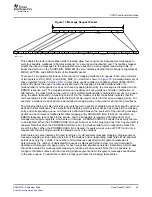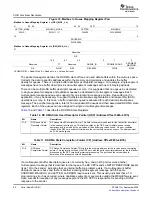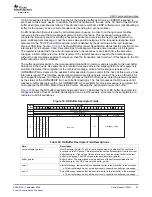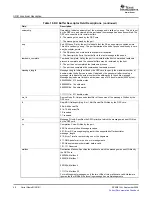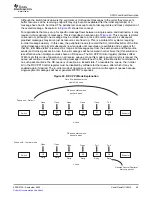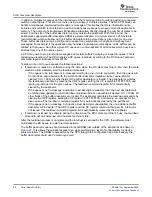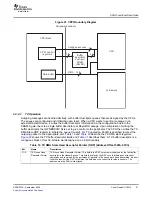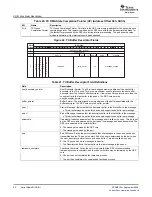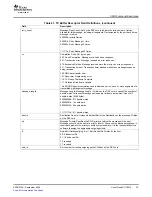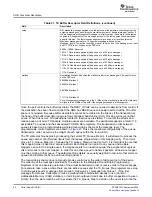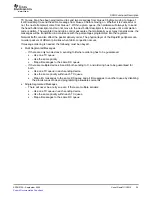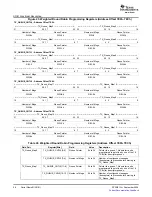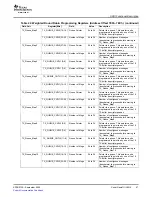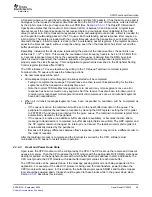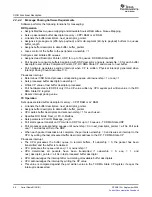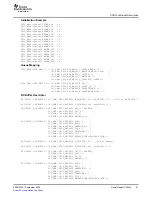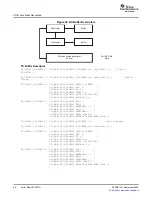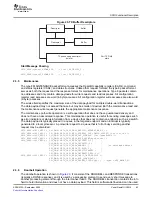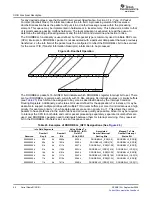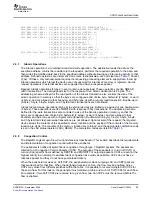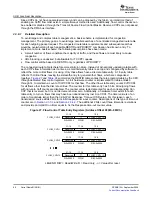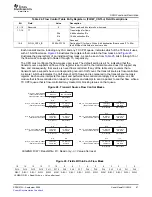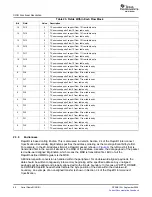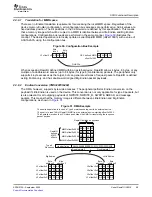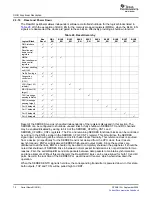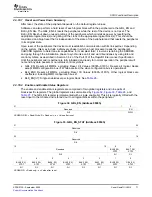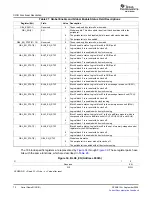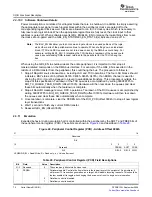
www.ti.com
2.3.4.3
Reset and Power Down State
SRIO Functional Description
A transaction timeout is used by all outgoing message and direct I/O packets. It has the same value and is
analogous to the request-to-response timer discussed in the RX CPPI and LSU sections, which is defined
by the 24-bit value in the port response time-out CSR (See
Section 2.3.3.3
). The RapidIO Interconnect
Specification states that the maximum time interval (all 1s) is between 3 and 6 seconds. A logical layer
timeout occurs if the response packet is not received before a countdown timer (initialized to this CSR
value) reaches zero. Since transaction responses can be acknowledged out-of-order, a timer is needed for
each supported outstanding packet in the TX queue. Each outstanding packet response timer requires a
4-bit register. The register is loaded with the current timecode when the transaction is sent. Each time the
timecode changes, a 4-bit compare is done to the 16 outstanding packet registers. If the register becomes
equal to the timecode again, without a response being seen, then the transaction has timed out and the
buffer descriptor is written.
Essentially, instead of the 24-bit value representing the period of the response timer, the period is now
defined as P = (2
24
x 16)/F. This means the countdown timer frequency needs to be 44.7–89.5 MHz for a
6–3 second response timeout. Since the needed timer frequency is derived from the DMA bus clock
(which is device dependent), the hardware supports a programmable configuration register field to
properly scale the clock frequency. This configuration register field is described in the Peripheral Setting
Control register (Address offset 0020h).
The CPU initiates a TX queue teardown by writing to the TX Queue Teardown command register.
Teardown of a TX queue will cause the following actions:
•
No new messages will be sent.
•
All messages (single and multi-segment) already started will be completed.
–
Failing to complete the message TX would leave an active receiver blocked waiting for the final
segments until the transaction eventually times-out.
–
Note that normal TX State Machine operation is to not send any more segments once an error
response has been received on any segment. So if the receiver has also been torn-down (and is
receiving error responses) multi-segment transmit will complete as soon as all in-transit segments
have been responded to.
•
When all in-transit messages/segments have been responded to, teardown will be completed as
follows:
–
If the queue is active, the teardown bit will be set in the next buffer descriptor in the queue. The
peripheral completes the teardown procedure by clearing the HDP register, setting the CP register
to FFFFFFFCh, and issuing an interrupt for the given queue. The teardown command register bit is
automatically cleared by the peripheral.
–
If the queue is in-active (no additional buffer descriptors available), or becomes inactive after a
message in transmission is completed, no buffer descriptor fields are written. The HDP register and
the CP register remain unchanged. An interrupt is not issued. The teardown command register bit
is automatically cleared by the peripheral.
–
Because of topology differences between flow's response, packets may arrive in a different order to
the order of requests.
After the teardown process is complete and the interrupt is serviced by the CPU, software must
re-initialize the TX queue to restart normal operation.
Upon reset, the CPPI module must be configured by the CPU. The CPU sets up the receive and transmit
queues in memory. Then the CPU updates the CPPI module with the appropriate RX/TX DMA state head
descriptor pointer, so the peripheral knows with which buffer descriptor address to start. Additionally, the
CPU must provide the CPPI module with initial buffer descriptor values for each data buffer.
The CPPI module can be powered down if the message passing protocol is not being supported in the
application. For example, if the direct I/O protocol is being used for data transfers, powering down the
CPPI module will save power. In this situation, the buffer descriptor queue SRAMs and mailbox mapper
logic should be powered down. Clocks should be gated to these blocks while in the power down state.
Section 2.3.10
describes this in detail.
SPRUE13A – September 2006
Serial RapidIO (SRIO)
59
Submit Documentation Feedback

